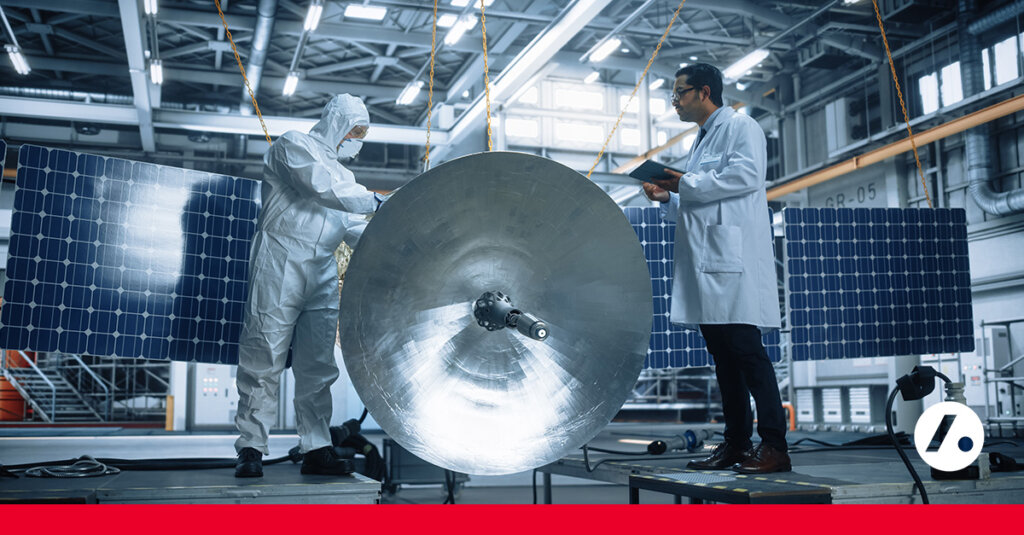
Aerospace and Defense Industry’s Demand for Talent Outpaces Supply
The aerospace and defense (A&D) industry designs, manufactures, and services some of the world’s most complex machinery—airplanes, spacecrafts, satellites, ships, submarines, and other electronics and equipment used in military and commercial settings.
United States A&D companies play a major role in our national defense and global security and help lead the global A&D market, along with Canada and Mexico. In 2022, the A&D industry witnessed an acceleration in its economic revival, propelled by the widespread distribution of COVID-19 vaccines and a return to air travel. As passenger volumes slowly rebounded to pre-pandemic levels, the industry observed substantial increases in new aircraft and military orders to achieve 2022 revenues of $741 billion, 3 percent more than in 2021. Still, it fell short of expectations due to production constraints caused by supply chain and talent challenges.
Moving forward, many factors will contribute to the industry’s success, but chief among them is the ability to recruit and retain highly qualified workers—and quickly. Given the competitive job market, that’s no simple task.
The aerospace and defense workforce today
Today the aerospace and defense industry supports more than 2.1 million jobs across the United States, with the highest concentrations of workers in California, Washington, Texas, Connecticut, Arizona, Florida, Ohio, Kansas, Georgia, and Virginia. Roles include mechanical engineers, electrical engineers, aircraft designers, flight inspectors, quality assurance engineers, program managers, research scientists, systems administrators, intelligence analysts, and test engineers.
Industry compensation is significantly higher—about 40 percent—than the national average. In 2021, the average salary for aerospace workers was just slightly over $106,700, per the AIA. And although the A&D workforce is less diverse than the U.S. labor force as a whole, the industry has started to see more Black, Hispanic, and female representation in the workforce in recent years.
Employee turnover in the A&D industry rose to 7.1 percent in 2022, up from 5.7 percent in 2021, and 29 percent of the sector’s workforce is over 55 and will leave a 3.5 million worker gap by 2026 upon retirement. Since 2014 the number of jobs requiring security clearance has increased by almost 1,000 percent, while the number of qualified candidates for those positions has risen by less than 10 percent leaving over 70,000 unfilled roles.
At the same time, the industry is witnessing a transformation in its workforce due to automation and the adoption of sophisticated digital technologies. As a result, there is a growing demand for workers with advanced aerospace engineering, mathematical, data science, and digital skills.
A competitive talent market means employers must stand out
In a competitive talent market, aerospace and defense employers must find ways to stand out from their competitors to attract and retain top talent. This can be achieved through several strategies.
- Emphasize flexible work arrangements: Even as companies have welcomed employees back to the office, many remain mindful that flexible work arrangements are here to stay—and that the talent market is very different from just a few years ago. In fact, “the 4/10 and 9/80 schedules are already embraced by many A&D firms across both their frontlines and back offices,” states PwC.
- Differentiate through your employee value proposition: A&D employers must go above and beyond to separate themselves from their competition. Researchers conducted a 2022 study of the A&D workforce and concluded that a differentiated and compelling employee value proposition is critical to attracting, retaining, and developing top talent.
Related: How to Develop a Compelling Employee Value Proposition
Related: The Importance of a Strong Employee Value Proposition with Examples
In general, companies seem to be aligned on the standard benefits they offer—things like employee recognition, career development opportunities, and tuition reimbursements. The way employers can truly set themselves apart, researchers say, is by creating a culture that fosters the things that top talent values: employee connection and continuous learning.
- Ensure next-generation knowledge transfer: Ensuring effective knowledge transfer to the next generation in the workplace is crucial for the continuity of expertise and the development of future leaders. Strategies to facilitate knowledge transfer include mentorship programs, cross-generational collaboration, job shadowing, and succession planning.
- Focus on skills: To implement skills-based hiring, A&E companies should identify key skills and competencies, create clear job descriptions, revise the recruitment process to prioritize skills assessment, conduct structured skills-based interviews and tests, involve technical experts in the evaluation process, evaluate both technical and soft skills, provide training opportunities, and regularly evaluate and adjust the hiring process for continual improvement.
What employers want
We’ve heard a lot about the new and changing demands of candidates and employees, but what employers want is evolving, too.
As the industry transitions from hardware to software, demand for digital talent is quickly outpacing supply—and in a highly competitive job market that pits aerospace and defense against big tech companies, A&D is coming up short. Approximately 50,000 positions sector-wide remain unfilled, according to a 2022 McKinsey report, and the overwhelming majority are in technology.
A PwC survey found that “employees in the aerospace and defense industry are the least likely sector to recommend their employer as a place to work in the next 12 months, compared to other industries.” Therefore, for employers to get what they want, they must adapt to the needs and preferences of their prospective employees, which vary by generation. Creating an organizational culture incorporating workers’ values—purpose, flexibility, collaboration, and inclusion—won’t happen overnight. However, A&D companies must shift in that direction if they don’t want to fall further behind.
The aerospace and defense industry is well-positioned to continue its upward trajectory. But it needs a robust and highly qualified workforce to make it happen.
This blog was written by Acara Director of Enterprise Sales Derrick Ryskamp.




